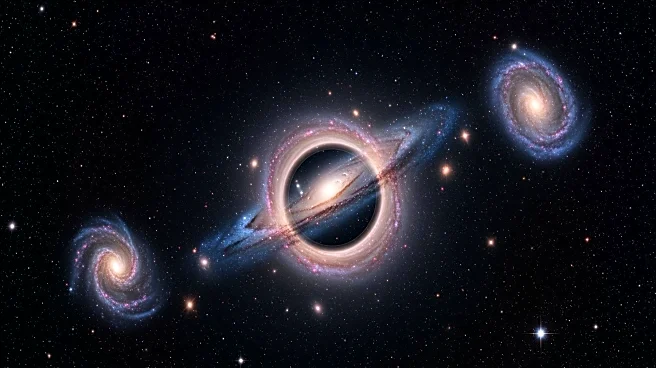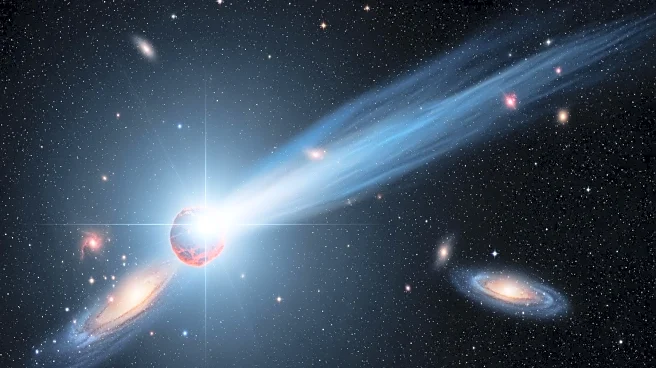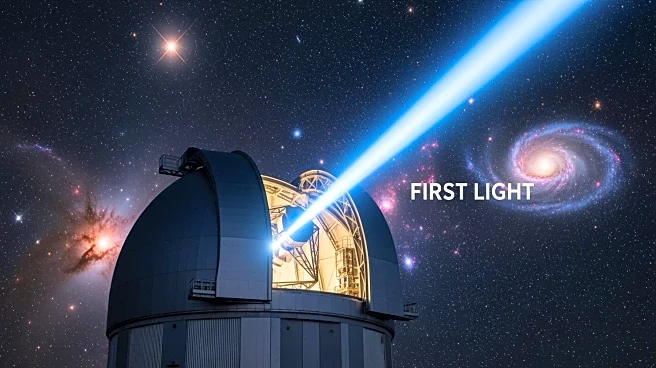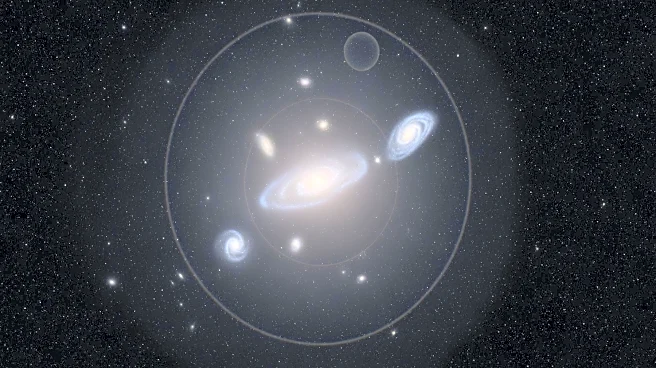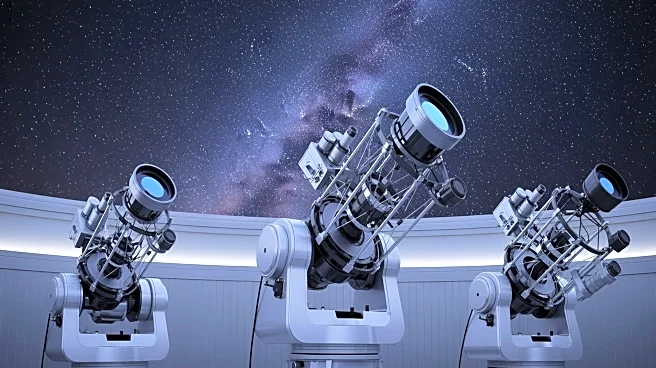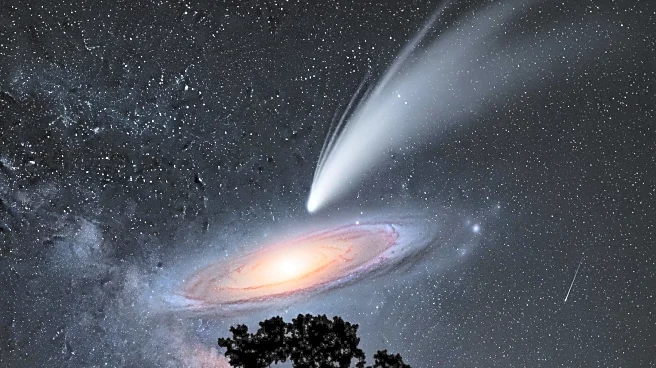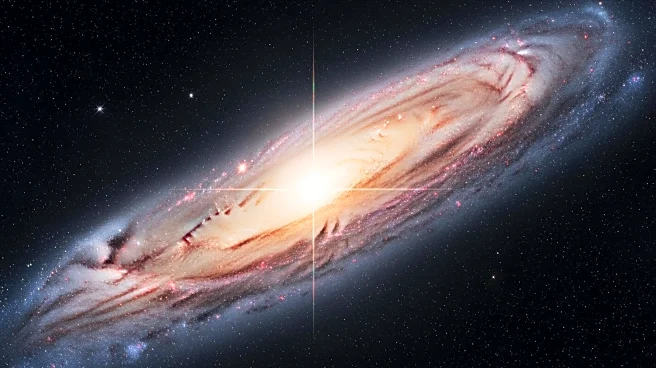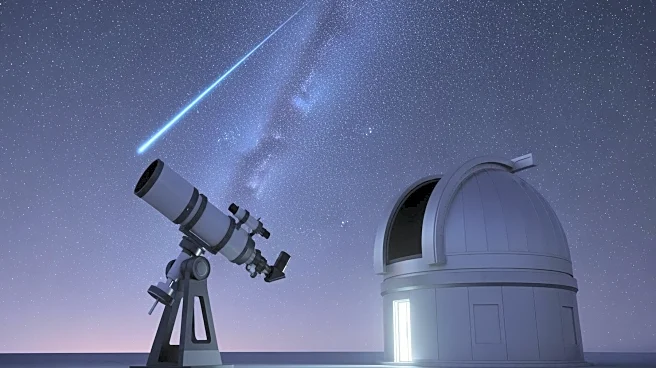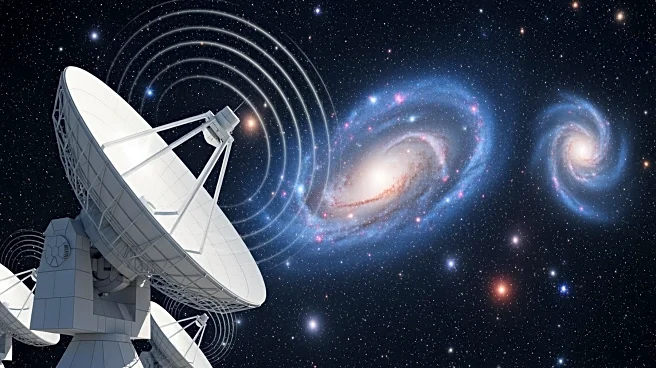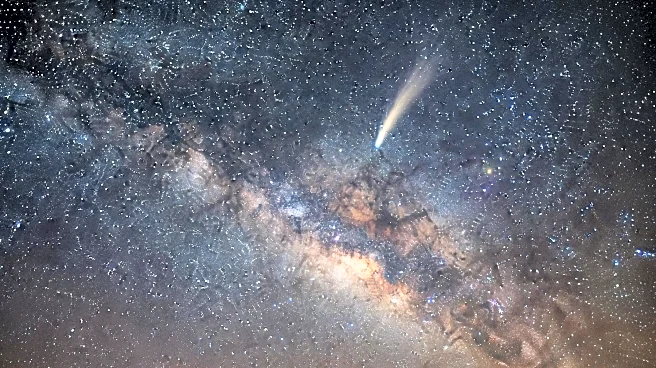What's Happening?
Researchers from The University of Texas at Austin and The University of Texas at San Antonio have discovered a massive black hole at the center of the dwarf galaxy Segue 1. This finding challenges the previous
assumption that dark matter was the primary force holding such galaxies together. The study, published in The Astrophysical Journal Letters, involved advanced modeling techniques to analyze the gravitational dynamics within Segue 1. The researchers found that the stars in the galaxy's center were moving in tight circles, indicative of a black hole's presence. The black hole is estimated to be 450,000 times the mass of the sun, significantly larger than the combined mass of all the stars in Segue 1.
Why It's Important?
This discovery has significant implications for the understanding of dwarf galaxies and their evolution. Traditionally, it was believed that dark matter was the main component binding these galaxies. However, the presence of a supermassive black hole suggests alternative models for galaxy formation and evolution. If similar black holes are common in other dwarf galaxies, it could lead to a reevaluation of how these systems develop over time. This finding also provides a new perspective on the relationship between black holes and their host galaxies, potentially altering the current models of galaxy dynamics and evolution.
What's Next?
The research team plans to further investigate the implications of their findings on the broader understanding of galaxy formation. They aim to explore whether other dwarf galaxies also host massive black holes and how this affects their structure and evolution. Additionally, the study opens up new avenues for examining the processes in newly discovered classes of galaxies, such as the Little Red Dots, which may share similar characteristics with Segue 1. Future research could provide deeper insights into the role of black holes in the early universe and their impact on galaxy formation.
Beyond the Headlines
The discovery of a massive black hole in Segue 1 raises questions about the traditional models of galaxy formation, particularly in dwarf galaxies. It suggests that black holes could play a more significant role than previously thought, potentially leading to a paradigm shift in astrophysics. This finding also highlights the importance of collaborative research and the use of advanced computational models in uncovering new astronomical phenomena. The study serves as a reminder of the complexities of the universe and the need for continuous exploration and questioning of established scientific theories.
